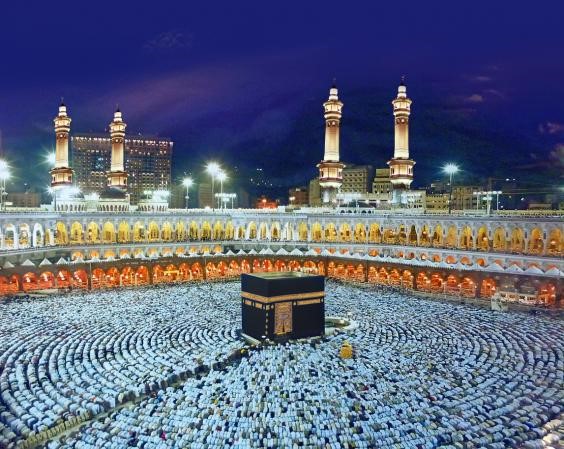Mecca and Medina are the Most Important Pilgrimage Cities fo…
페이지정보
내용
Mecca and Medina are the Most Important Pilgrimage Cities for all Muslims Including the Mediterranean
Mozafari Mohammad Hassan(IMS)
Mecca: Makkah or Mecca with a population of over two million, is situated approximately 80 kilometers inland from the Red Sea, amidst arid and barren mountains. Mecca is one of the most important cities in Saudi Arabia, located at an elevation of 330 meters above sea level and characterized by hot and dry weather. It holds a special place as the holiest city for Muslims, as it is the birthplace of Prophet Muhammad (peace be upon him). Mecca is home to the Kaaba, a symbolic structure representing the unity of God, and the Masjid al-Haram (the Grand Mosque), where Muslims from all around the world gather daily to perform their prayers. Every year, millions of Muslims from across the globe visit this city for religious pilgrimage, known as Hajj, and to perform various religious rituals.
During the annual Hajj pilgrimage, where millions of Muslims simultaneously converge on Mecca to fulfill their religious duties, the Masjid al-Haram has the capacity to accommodate up to four million worshippers. Muslims come to Mecca to worship, perform Tawaf (circumambulation) around the Kaaba, and engage in other religious activities. The Masjid al-Haram consists of various important sections, including the Black Stone (Hajar al-Aswad), the Station of Ishmael (Maqam Isma'il), the Station of Abraham (Maqam Ibrahim), the Zamzam Well (Bi'r Zamzam), Safa, and Marwah. These sacred sites are integral to the Hajj pilgrimage and hold immense significance for Muslims, making Mecca a focal point of Islamic spirituality and devotion.

Hajj means embarking on a journey towards Mecca and the Masjid al-Haram (the Sacred Mosque) to perform specific acts of worship at specific times and locations, all of which are located in the city of Mecca and its surroundings. According to verse 27 of Surah Al-Hajj, the Quran, Prophet Ibrahim was tasked by God to convey the obligation of Hajj to the people. Unlike the Hajj pilgrimage, which takes place once a year with the presence of millions of Muslims from around the world in Mecca, the religious and worshipful journey (including some of the acts of Hajj) known as "Umrah" can be performed throughout the year. Therefore, Muslims, including those from the Mediterranean region, can individually or as a group undertake this spiritual and worshipful journey to Mecca and Medina whenever they desire. Muslims from Andalusia and North Africa referred to these religious and worshipful journeys as "Rihlah" and some scholars and writers have written travelogues under the same title. In addition to the pilgrimage sites in Mecca, Muslims also travel to the city of Medina, especially to visit historical and religious sites such as the Mosque of the Prophet (Masjid al-Nabawi) and the tomb of the Prophet of Islam, Hazrat Muhammad (MPBUH).
Medina: Madinah or Medina, is one of the holiest cities in Islam and holds immense importance for Muslims around the world. It is located in present-day Saudi Arabia and is the second-holiest city in Islam after Makkah (Mecca). The significance of Madinah for Muslims is multifaceted and deeply rooted in Islamic history and tradition. Madinah is most renowned as the city to which the Prophet Muhammad and his early followers migrated in 622 CE. This event is known as the Hijra (Hijrah) and marks the beginning of the Islamic calendar. The people of Madinah welcomed the Prophet and his followers and played a pivotal role in the early development of Islam. This migration was a turning point in Islamic history as it allowed the Muslim community to grow and thrive.
In Madinah, the Prophet Muhammad (PBUH) played a central role in establishing the first Islamic state, complete with a constitution (the Constitution of Madinah) that guaranteed rights and responsibilities for all residents, including Muslims and non-Muslims. This model of governance is considered a significant historical precedent in the development of Islamic political thought.

Madinah is home to the Prophet's Mosque, one of the most revered places of worship in Islam. The mosque houses the tomb of the Prophet Muhammad (PBUH) and is a destination for millions of pilgrims and visitors each year. It is a place of prayer, reflection, and spiritual significance for Muslims worldwide.
Madinah remains a place of great spiritual significance for Muslims. It is a recommended practice for Muslims performing Hajj (pilgrimage) to visit Madinah after Makkah. Many Muslims also undertake separate journeys solely to visit the Prophet's Mosque and offer their respects at the Prophet's tomb. Madinah and Makkah have historically been centers for Islamic scholarship and learning. It has produced numerous renowned Islamic scholars who have contributed significantly to Islamic jurisprudence, theology, and other fields of Islamic knowledge.
Makkah and Madinah hold immense historical and religious importance for Muslims. they were the cities where Islam initially flourished, where the first Islamic state was established, and where the teachings and practices of Islam were further developed. Today, it continues to serve as a place of pilgrimage, prayer, and reflection for Muslims.




